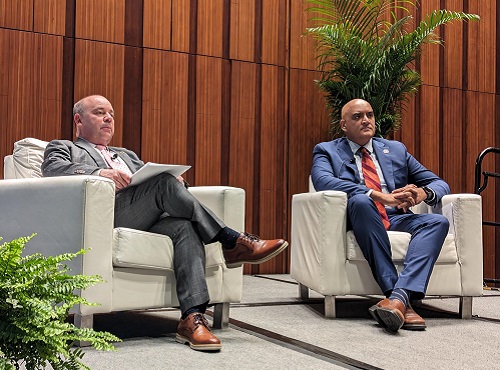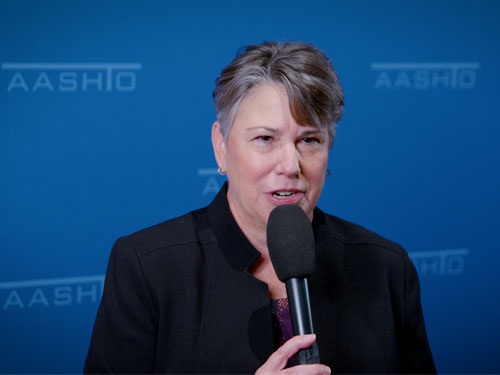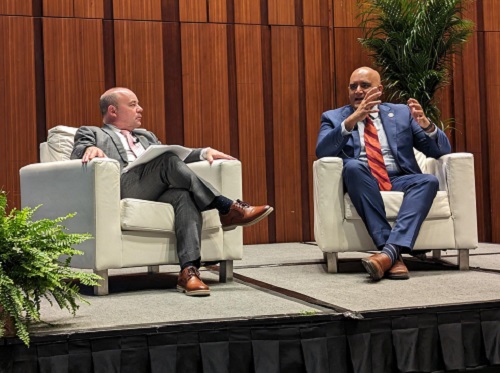Shailen Bhatt (above at right) – head of the Federal Highway Administration – discussed some of his agency’s current and future transportation focus areas at the 2024 Washington Briefing held by the American Association of State Highway and Transportation Officials in Washington, D.C. – the biggest one being roadway safety.
[Above photo by AASHTO]
“Back in 2010, we were seeing around 30,000 deaths annually on our roadways, with fatalities dropping each year, so we were cautiously optimistic we were headed in the right direction at the time,” he explained in his remarks. “As we all know, all of that turned out to be moot; we went the other way as we are now around the 43,000 [annual fatality] mark.”

Despite that grim figure, Bhatt offered what he called a “more positive take” on the current roadway safety picture.
“Take the AASHTO Safety Summit organized last year; there has been action behind it,” he said. “Also, my [FHWA] division staff have now worked with 48 states to deploy a variety of safety countermeasures. It is such a positive thing to see words followed with action. So I am now again cautiously optimistic; the [fatality] numbers are now coming down a bit over the last few quarters. While it is nothing to celebrate, we’ve stopped the massive 10 percent year-over-year increases [in fatalities].”
Bhatt also noted that “technology is changing the way we construct projects and experience transportation” and will also play a key role in helping the nation achieve zero deaths on its roadways in the future.
“There is no aspect of your life that has not been changed by technology by now; it has changed how we shop, eat, consume media, work, and of course travel from one place to another,” he said.
“Now we are getting data off of vehicles so we can really delve into crash causation, which also means getting details on near-misses as well as why a crash did not happen. Now we are getting is ‘actionable intelligence’ about crashes. All of the predictive analytics are out there – and it will make a night and day difference in how we operate our [transportation] systems versus 10 years ago,” he added.
That being said, Bhatt stressed that despite this “exciting time” where technological advances are concerned, “it is really incumbent on us to deploy every tool in the tool box” to keep improving roadway safety.
“When comes to safety, we have to keep erring on the side of safety; not on the side of caution,” he pointed out.
 Top Stories
Top Stories
USDOT Makes $1.5B Worth of BUILD Grants Available
December 19, 2025 Top Stories
Top Stories

